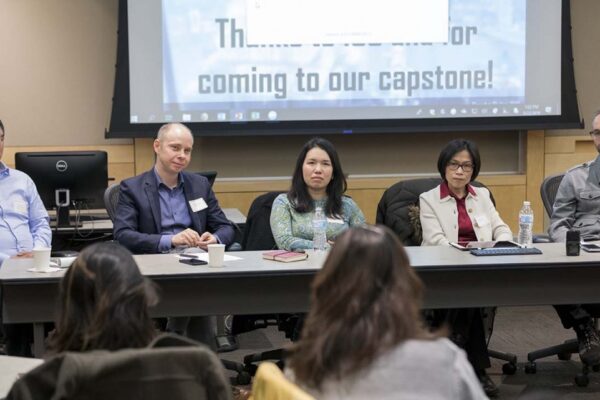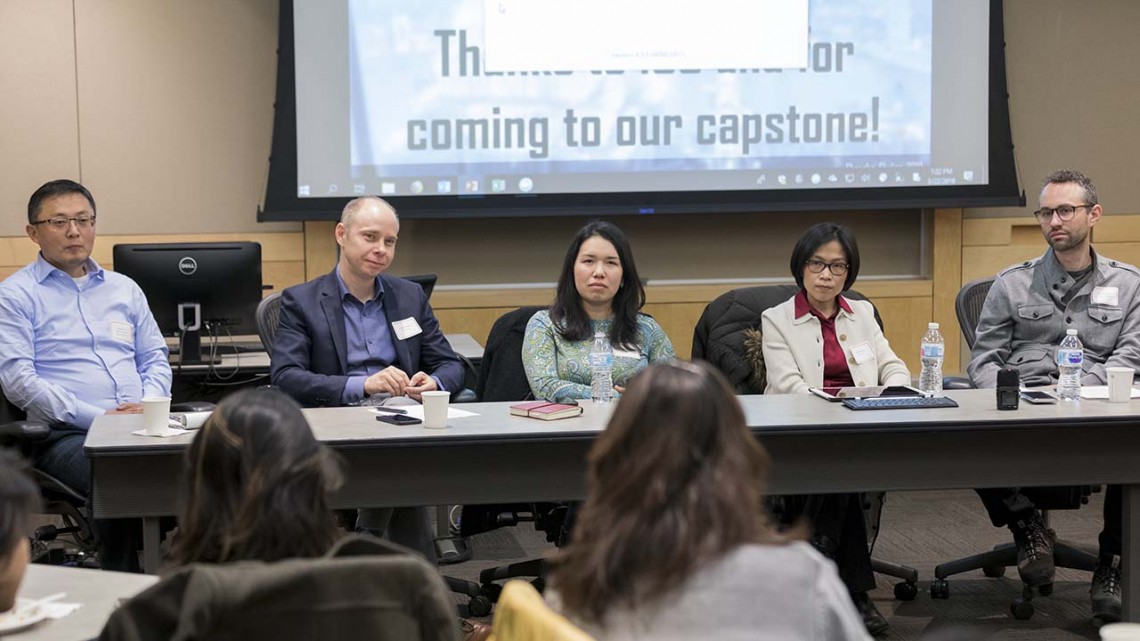Social scientists analyze the dynamics shaping China’s cities


The faculty fellows of the China’s Cities collaborative project answer a question from the audience at their capstone lecture March 22 at the ILR Conference Center. From left, Shanjun Li, associate professor of applied economics and management; project leader Jeremy Wallace, associate professor of government; Jessica Chen Weiss, associate professor of government; Panle Barwick, associate professor of industrial organization, applied econometrics and applied microeconomics; and Eli Friedman, associate professor of international and comparative labor.
By Susan Kelley | April 9, 2019 (Cornell Chronicle)
(Video available on http://www.cornell.edu/video/chinas-cities-project-capstone-event)
The cities of China, the world’s most populous country, are growing at an eye-popping rate. Every year, 8 million rural Chinese – the equivalent of New York City’s population – move to urban areas.
China’s enormous cities, their divisions and future plans have been at the heart of five social scientists’ research for the past three years. These faculty fellows of the China’s Cities: Divisions and Plans (2016-19) project, sponsored by the Institute for the Social Sciences, reported on their research at a March 22 capstone lecture at the ILR Conference Center.
“The collaboration, it’s fair to say, has been successful,” said project leader Jeremy Wallace, associate professor of government in the College of Arts and Sciences. The team produced 20 articles, he said, “and many more are on the way.” The project also resulted in a major survey of more than 3,000 people in China’s cities, Wallace said, “and, crucially, time [for the faculty fellows] to write and think.”
Jessica Chen Weiss, associate professor of government, talked about a new collaborative paper written with faculty fellows Panle Barwick, Shanjun Li and Wallace, on the “commercial causalities” of territorial disputes with Japan in 2012. These political tensions prompted Chinese citizens throughout China’s cities to burn Japanese cars and boycott Japanese products.
These consumer boycotts can have a significant and persistent effect, the team found. “These protests really make visible the social penalty of owning or consuming their goods, and that socially constructed penalty varies across cities,” Weiss said.
Countries can use boycotts as a commercial weapon to help resolve or diffuse highly antagonistic disputes, she said. “This is one way that China, in this particular context, signaled to Japan how seriously this issue was being felt by the Chinese public, to encourage Japan to, if not concede, at least diffuse the crisis,” she said.
Shanjun Li, associate professor of applied economics and management in the Dyson School, used big data in four studies to shed light on the effects of pollution, climate change and energy challenges on human health and economic growth.
He conducted three of the studies with Barwick. Their analysis of credit- and debit-card data showed that when air pollution levels are high, people spend more money in pharmacies and hospitals, but less on groceries and other necessities. Similarly, when temperatures are very hot or very cold, people spend more money on health care and reduce their overall consumption. They also travel to other cities to escape the extreme temperatures, with the help of improvements in transportation infrastructure. “This provides another benefit of transportation investment,” he said, “by helping people mitigate extreme weather conditions.”
In a fourth study, Li identified the optimal timing and fees to charge Beijing road-users – for example, 10 cents per kilometer at a particular time of day – to reduce traffic congestion.
Eli Friedman, associate professor of international and comparative labor in the ILR School, talked about his upcoming book, “The Urbanization of People,” which focuses on the question of who gets into which cities and why.
“What the central government wants to do is send elite people to elite cities and the low-end population to low-end cities,” he said. Those who get a state subsidized education are those who need it least; everyone else is relegated to “migrant schools” that lack indoor plumbing, heating and other basics, he said.
He focused on Beijing in 2014, when officials began removing the migrant population by depriving them of education. “Education is a key pressure point,” he said. “ … In the most extreme cases, the government resorts to just demolishing schools.”
Parents and teachers do resist and can sometimes get students placed in better schools. “The good news is that people recognize this as a problem and are doing what they can within a constrained political environment to try to fight back,” Friedman said.
Panle Barwick, associate professor economics, talked about her research on China’s industrial policy, using shipbuilding as a case study. “The magnitude of the industrial policies is massive,” she said. “That’s not surprising. … What we’re watching is, what’s the return?”
She found that for every dollar invested in the shipping industry, China gets back 20 to 30 cents, she said. “It’s a very low rate of return.”
That’s in part because all firms get subsidies to enter the industry, not just ones with good track records. “You’re basically subsidizing everybody,” Barwick said. Timing investments to hit at critical moments in the production cycle would also greatly improve returns, she said.
“We’re hoping to use this analysis to show how we can do better,” she said. “Design of the policy is crucial.”
